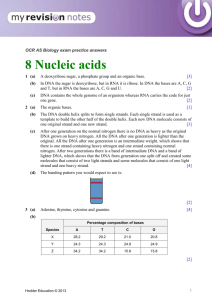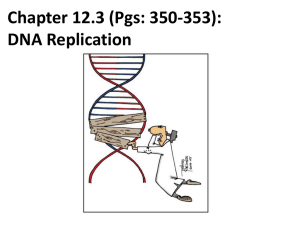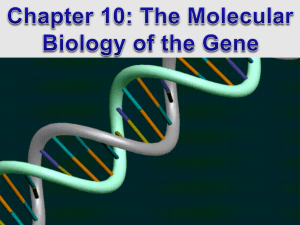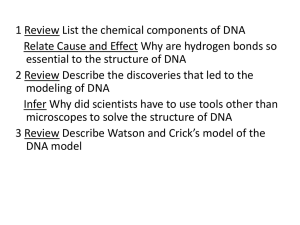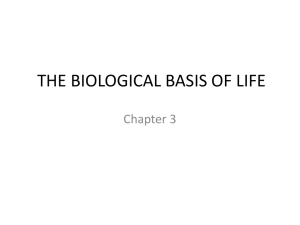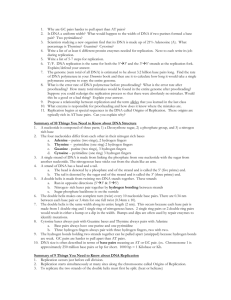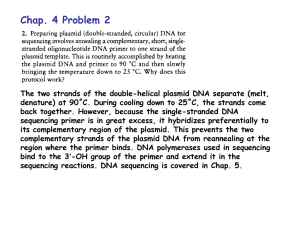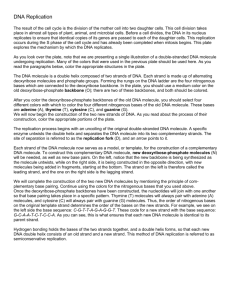DNA Replication - Auburn City Schools
advertisement
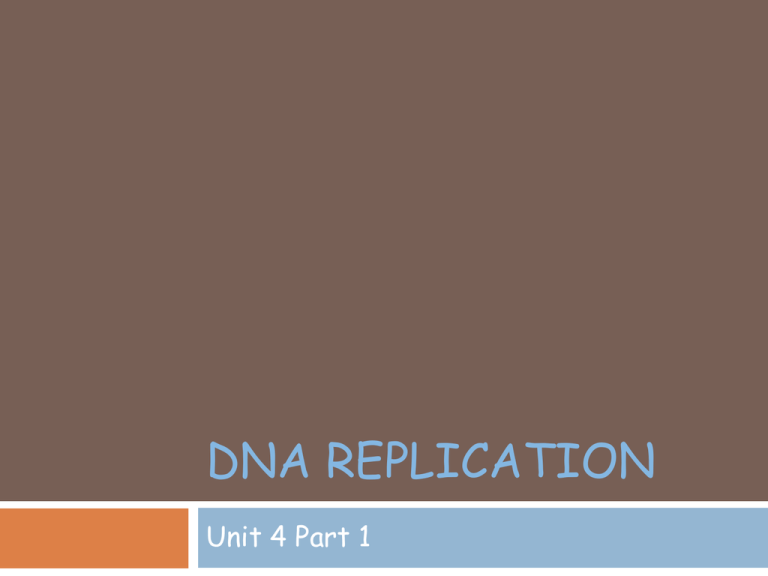
DNA REPLICATION Unit 4 Part 1 Review of DNA structure Deoxyribonucleic Acid. Basis for all living things. Codes for proteins which control traits like eye color, nose shape, heart function. Made up of repeating subunits or monomers called nucleotides. Nucleotides are made up of: Nucleoside + N base. Nucleoside = Phosphate group and sugar covalently bonded. Nitrogen base There are 4 nitrogen bases: A, T, G, C 2 Categories: Purines: Double ring Adenine Guanine Pyrimidines: Single ring Thymine Cytosine Nitrogen Bases Nitrogen bases bond together by Hydrogen bonds is what makes the double helix shape. The 4 nitrogen bases are grouped together Pyrimidines Cytosine Thymine Purines Adenine Guanine Chargoff’s Rule: Only a purine can pair with a pyrimidine Adenine – Thymine Guanine – Cytosine Complementary Bases In order to make the double strand, the N bases pair up with an existing strand. What would the complementary strand be for the following DNA sequence: AAA TCG GTA CCA TGA CAG GCC TGC AAT __________________________________________ DNA Replication 1. The enzyme called DNA Helicase unwinds and unzips the double helix by breaking the Hydrogen bonds between the nitrogen bases. 2. The 2 strands separate and form a replication fork and expose the Nbases of the two parents/templates to create the new strands with the help of DNA Polymerase. DNA Replication cont’d. 3. DNA Polymerase adds New nucleotides to the unwound strands (templates or parent strands) following the base pairing rules.(A-T & G-C) 4. As DNA polymerase moves along the strands, 2 new double helixes are formed. 5. The 2 new strands are said to be semi-conservative because each strand contains one new complementary strand and one original strand/template strand. DNA Replication Review Occurs during the S phase of Interphase. Process by which 2 identical helixes of DNA are created. First the double helix unwinds and unzips-DNA Helicase. New nucleotides are added to the existing strandsDNA Polymerase. DNA replication is complete (now it’s time to divide the cell.) Once the DNA (chromatin) condenses into chromosomes they will be called replicated chromosomes. DNA Replication Video DNA Replication Video

